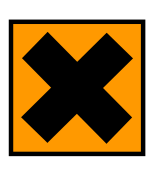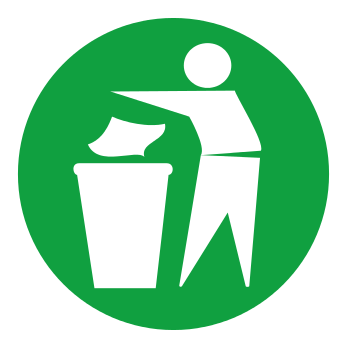简述
QSystemTrayIcon类为应用程序在系统托盘中提供一个图标。
现代操作系统通常在桌面上提供一个特殊的区域,称为系统托盘或通知区域,长时间运行的应用程序可以显示图标和短消息。
内容
详细描述
要检查系统托盘是否存在在用户的桌面上,调用QSystemTrayIcon::isSystemTrayAvailable()静态函数。
要添加系统托盘项,首先,需要创建一个QSystemTrayIcon对象,并调用setContextMenu()为图标提供上下文菜单,然后,调用show()使其在系统托盘中可见。状态通知消息(“气球消息”)可以在任何时候使用showMessage()来进行显示。
当用户激活托盘图标时,activated()信号会被发射。
只有在X11上时,当发出一个tooltip请求时,QSystemTrayIcon会接收一个QEvent::ToolTip类型的QHelpEvent事件。此外,QSystemTrayIcon会接收QEvent::Wheel类型的滚轮事件。这些都是不支持任何其它平台。
共有类型
枚举
QSystemTrayIcon::ActivationReason:
此枚举描述了系统托盘被激活的原因。
| 常量 | 值 | 描述 | | :—-: | :—-: | :—-: | | QSystemTrayIcon::Unknown | 0 | 未知原因 | | QSystemTrayIcon::Context | 1 | 系统托盘的上下文菜单请求 | | QSystemTrayIcon::DoubleClick | 2 | 双击系统托盘 | | QSystemTrayIcon::Trigger | 3 | 单击系统托盘 | | QSystemTrayIcon::MiddleClick | 4 | 鼠标中键点击系统托盘 |枚举
QSystemTrayIcon::MessageIcon:
此枚举描述了显示气球消息时所显示的图标。 | 常量 | 值 | 描述 | | :—-: | :—-: | :—-: | | QSystemTrayIcon::NoIcon | 0 | 无图标显示 | | QSystemTrayIcon::Information | 1 | 一个信息图标显示 | | QSystemTrayIcon::Warning | 2 | 一个标准的警告图标显示 | | QSystemTrayIcon::Critical | 3 | 一个严重的警告图标显示 |
共有函数
- QMenu * contextMenu() const
返回系统托盘的当前上下文菜单。 - void setContextMenu(QMenu menu)
设置指定菜单为系统托盘的上下文菜单。
当用户通过点击鼠标请求系统托盘的上下文菜单时,菜单会弹出。
在OS X中,一般转换为一个NSMenu,所以aboutToHide()信号不会发出。
*注意:系统托盘菜单并不对菜单有所有权,必须确保在恰当的时候删除菜单,例如:创造一个具有合适父对象的菜单。 - QRect QSystemTrayIcon::geometry() const
返回系统托盘图标在屏幕上的几何坐标。 - QIcon icon() const
- void setIcon(const QIcon & icon)
icon : QIcon
这个属性保存了系统托盘的图标。
在Windows中,系统任务栏图标的大小是16×16;X11中,首选大小为22x22。必要时该图标将被调整到合适大小。 - void setToolTip(const QString & tip)
- QString toolTip() const
toolTip : QString
这个属性保存了系统托盘的提示信息。
在一些系统中,tooltip的长度是有限的,在必要时tooltip将被截断。 bool isVisible() const
返回系统托盘是否可见。
公有槽函数
void hide()
隐藏系统托盘。- void setVisible(bool visible)
设置系统托盘是否可见。
设置为true或调用show()使系统托盘图标可见;设置为false或调用hide()隐藏它。 - void show()
显示系统托盘。 - void showMessage(const QString & title, const QString & message, QSystemTrayIcon::MessageIcon icon = QSystemTrayIcon::Information, int millisecondsTimeoutHint = 10000)
显示一个气球消息,使用所给出的标题、消息、图标和指定的时间,标题和消息必须是纯文本字符串。
消息可以被用户点击,当用户点击时发出messageClicked()信号 。
信号
- void activated(QSystemTrayIcon::ActivationReason reason)
当用户激活系统托盘图标,这个信号被发射。reason指定激活的原因, QSystemTrayIcon::ActivationReason列举了各种原因。 void messageClicked()
当使用showMessage()显示的消息被用户点击时,此信号被发射。
目前,这个信号不会在OS X中发射。
静态共有函数
bool isSystemTrayAvailable() [static]
如果系统托盘可用,返回true;否则,返回false。
如果系统盘是当前不可用,但以后变为可用,若QSystemTrayIcon可见,它就会自动在系统托盘中添加条目。- bool supportsMessages() [static]
如果系统托盘支持气球消息,则返回true;否则,返回false。
例子
头文件
#ifndef WINDOW_H#define WINDOW_H#include <QSystemTrayIcon>#ifndef QT_NO_SYSTEMTRAYICON#include <QDialog>QT_BEGIN_NAMESPACEclass QAction;class QCheckBox;class QComboBox;class QGroupBox;class QLabel;class QLineEdit;class QMenu;class QPushButton;class QSpinBox;class QTextEdit;QT_END_NAMESPACEclass Window : public QDialog {Q_OBJECTpublic:Window();void setVisible(bool visible) override;protected:void closeEvent(QCloseEvent* event) override;private slots:void setIcon(int index);void iconActivated(QSystemTrayIcon::ActivationReason reason);void showMessage();void messageClicked();private:void createIconGroupBox();void createMessageGroupBox();void createActions();void createTrayIcon();QGroupBox* iconGroupBox;QLabel* iconLabel;QComboBox* iconComboBox;QCheckBox* showIconCheckBox;QGroupBox* messageGroupBox;QLabel* typeLabel;QLabel* durationLabel;QLabel* durationWarningLabel;QLabel* titleLabel;QLabel* bodyLabel;QComboBox* typeComboBox;QSpinBox* durationSpinBox;QLineEdit* titleEdit;QTextEdit* bodyEdit;QPushButton* showMessageButton;QAction* minimizeAction;QAction* maximizeAction;QAction* restoreAction;QAction* quitAction;QSystemTrayIcon* trayIcon;QMenu* trayIconMenu;};//! [0]#endif // QT_NO_SYSTEMTRAYICON#endif
实现
#include "window.h"#ifndef QT_NO_SYSTEMTRAYICON#include <QAction>#include <QCheckBox>#include <QCloseEvent>#include <QComboBox>#include <QCoreApplication>#include <QGroupBox>#include <QLabel>#include <QLineEdit>#include <QMenu>#include <QMessageBox>#include <QPushButton>#include <QSpinBox>#include <QTextEdit>#include <QVBoxLayout>Window::Window(){createIconGroupBox();createMessageGroupBox();iconLabel->setMinimumWidth(durationLabel->sizeHint().width());createActions();createTrayIcon();connect(showMessageButton, &QAbstractButton::clicked, this, &Window::showMessage);connect(showIconCheckBox, &QAbstractButton::toggled, trayIcon, &QSystemTrayIcon::setVisible);connect(iconComboBox, QOverload<int>::of(&QComboBox::currentIndexChanged), this, &Window::setIcon);connect(trayIcon, &QSystemTrayIcon::messageClicked, this, &Window::messageClicked);connect(trayIcon, &QSystemTrayIcon::activated, this, &Window::iconActivated);QVBoxLayout* mainLayout = new QVBoxLayout;mainLayout->addWidget(iconGroupBox);mainLayout->addWidget(messageGroupBox);setLayout(mainLayout);iconComboBox->setCurrentIndex(1);trayIcon->show();setWindowTitle(tr("Systray"));resize(400, 300);}// 设置托盘菜单显隐状态void Window::setVisible(bool visible){minimizeAction->setEnabled(visible);maximizeAction->setEnabled(!isMaximized());restoreAction->setEnabled(isMaximized() || !visible);QDialog::setVisible(visible);}// 关闭事件重写void Window::closeEvent(QCloseEvent* event){#ifdef Q_OS_MACOSif (!event->spontaneous() || !isVisible()) {return;}#endifif (trayIcon->isVisible()) {QMessageBox::information(this, tr("Systray"),tr("The program will keep running in the ""system tray. To terminate the program, ""choose <b>Quit</b> in the context menu ""of the system tray entry."));hide();event->ignore();}}// 设置托盘图标void Window::setIcon(int index){QIcon icon = iconComboBox->itemIcon(index);trayIcon->setIcon(icon);setWindowIcon(icon);trayIcon->setToolTip(iconComboBox->itemText(index));}// 托盘响应鼠标事件void Window::iconActivated(QSystemTrayIcon::ActivationReason reason){switch (reason) {case QSystemTrayIcon::Trigger:case QSystemTrayIcon::DoubleClick:iconComboBox->setCurrentIndex((iconComboBox->currentIndex() + 1) % iconComboBox->count());break;case QSystemTrayIcon::MiddleClick:showMessage();break;default:;}}// 设置系统提示框void Window::showMessage(){showIconCheckBox->setChecked(true);int selectedIcon = typeComboBox->itemData(typeComboBox->currentIndex()).toInt();QSystemTrayIcon::MessageIcon msgIcon = QSystemTrayIcon::MessageIcon(selectedIcon);if (selectedIcon == -1) { // custom iconQIcon icon(iconComboBox->itemIcon(iconComboBox->currentIndex()));trayIcon->showMessage(titleEdit->text(), bodyEdit->toPlainText(), icon, durationSpinBox->value() * 1000);} else {trayIcon->showMessage(titleEdit->text(), bodyEdit->toPlainText(), msgIcon, durationSpinBox->value() * 1000);}}// 弹出提示(系统提示框点击后的弹窗)void Window::messageClicked(){QMessageBox::information(nullptr, tr("Systray"),tr("Sorry, I already gave what help I could.\nMaybe you should try asking a human?"));}// 创建布局void Window::createIconGroupBox(){iconGroupBox = new QGroupBox(tr("Tray Icon"));iconLabel = new QLabel("Icon:");iconComboBox = new QComboBox;iconComboBox->addItem(QIcon(":/images/bad.png"), tr("Bad"));iconComboBox->addItem(QIcon(":/images/heart.png"), tr("Heart"));iconComboBox->addItem(QIcon(":/images/trash.png"), tr("Trash"));showIconCheckBox = new QCheckBox(tr("Show icon"));showIconCheckBox->setChecked(true);QHBoxLayout* iconLayout = new QHBoxLayout;iconLayout->addWidget(iconLabel);iconLayout->addWidget(iconComboBox);iconLayout->addStretch();iconLayout->addWidget(showIconCheckBox);iconGroupBox->setLayout(iconLayout);}// 创建布局void Window::createMessageGroupBox(){messageGroupBox = new QGroupBox(tr("Balloon Message"));typeLabel = new QLabel(tr("Type:"));typeComboBox = new QComboBox;typeComboBox->addItem(tr("None"), QSystemTrayIcon::NoIcon);typeComboBox->addItem(style()->standardIcon(QStyle::SP_MessageBoxInformation), tr("Information"), QSystemTrayIcon::Information);typeComboBox->addItem(style()->standardIcon(QStyle::SP_MessageBoxWarning), tr("Warning"), QSystemTrayIcon::Warning);typeComboBox->addItem(style()->standardIcon(QStyle::SP_MessageBoxCritical), tr("Critical"), QSystemTrayIcon::Critical);typeComboBox->addItem(QIcon(), tr("Custom icon"), -1);typeComboBox->setCurrentIndex(1);durationLabel = new QLabel(tr("Duration:"));durationSpinBox = new QSpinBox;durationSpinBox->setRange(5, 60);durationSpinBox->setSuffix(" s");durationSpinBox->setValue(15);durationWarningLabel = new QLabel(tr("(some systems might ignore this ""hint)"));durationWarningLabel->setIndent(10);titleLabel = new QLabel(tr("Title:"));titleEdit = new QLineEdit(tr("Cannot connect to network"));bodyLabel = new QLabel(tr("Body:"));bodyEdit = new QTextEdit;bodyEdit->setPlainText(tr("Don't believe me. Honestly, I don't have a clue.\nClick this balloon for details."));showMessageButton = new QPushButton(tr("Show Message"));showMessageButton->setDefault(true);QGridLayout* messageLayout = new QGridLayout;messageLayout->addWidget(typeLabel, 0, 0);messageLayout->addWidget(typeComboBox, 0, 1, 1, 2);messageLayout->addWidget(durationLabel, 1, 0);messageLayout->addWidget(durationSpinBox, 1, 1);messageLayout->addWidget(durationWarningLabel, 1, 2, 1, 3);messageLayout->addWidget(titleLabel, 2, 0);messageLayout->addWidget(titleEdit, 2, 1, 1, 4);messageLayout->addWidget(bodyLabel, 3, 0);messageLayout->addWidget(bodyEdit, 3, 1, 2, 4);messageLayout->addWidget(showMessageButton, 5, 4);messageLayout->setColumnStretch(3, 1);messageLayout->setRowStretch(4, 1);messageGroupBox->setLayout(messageLayout);}// 托盘菜单绑定事件void Window::createActions(){minimizeAction = new QAction(tr("Mi&nimize"), this);connect(minimizeAction, &QAction::triggered, this, &QWidget::hide);maximizeAction = new QAction(tr("Ma&ximize"), this);connect(maximizeAction, &QAction::triggered, this, &QWidget::showMaximized);restoreAction = new QAction(tr("&Restore"), this);connect(restoreAction, &QAction::triggered, this, &QWidget::showNormal);quitAction = new QAction(tr("&Quit"), this);connect(quitAction, &QAction::triggered, qApp, &QCoreApplication::quit);}// 添加托盘菜单选项void Window::createTrayIcon(){trayIconMenu = new QMenu(this);trayIconMenu->addAction(minimizeAction);trayIconMenu->addAction(maximizeAction);trayIconMenu->addAction(restoreAction);trayIconMenu->addSeparator();trayIconMenu->addAction(quitAction);trayIcon = new QSystemTrayIcon(this);trayIcon->setContextMenu(trayIconMenu);}#endif
main函数
#include <QApplication>#ifndef QT_NO_SYSTEMTRAYICON#include "window.h"#include <QMessageBox>int main(int argc, char* argv[]){Q_INIT_RESOURCE(systray);QCoreApplication::setAttribute(Qt::AA_UseHighDpiPixmaps);QApplication app(argc, argv);if (!QSystemTrayIcon::isSystemTrayAvailable()) {QMessageBox::critical(nullptr, QObject::tr("Systray"),QObject::tr("I couldn't detect any system tray ""on this system."));return 1;}QApplication::setQuitOnLastWindowClosed(false);Window window;window.show();return app.exec();}#else#include <QDebug>#include <QLabel>int main(int argc, char* argv[]){QApplication app(argc, argv);QString text("QSystemTrayIcon is not supported on this platform");QLabel* label = new QLabel(text);label->setWordWrap(true);label->show();qDebug() << text;app.exec();}#endif
图片
bad.png
heart.png
trash.png
https://waleon.blog.csdn.net/article/details/52014110 Qt自带例子 Qt5.15\5.15.2\Src\qtbase\examples\widgets\desktop\systray

